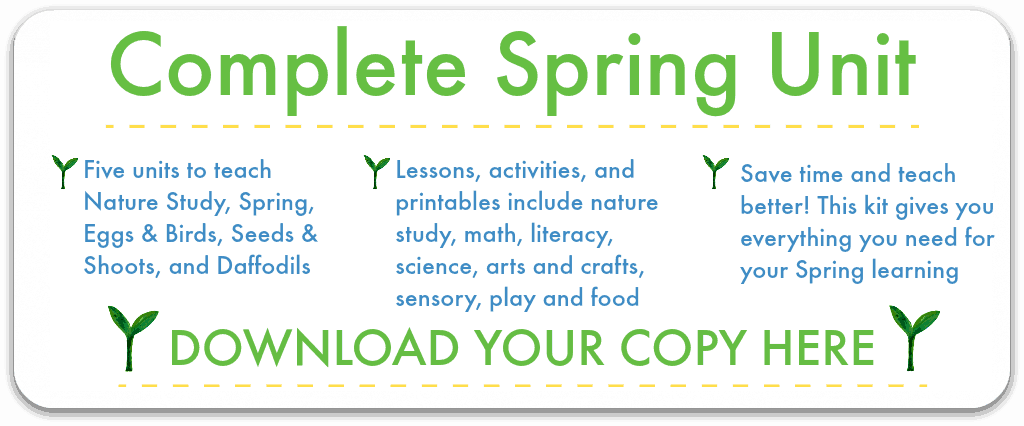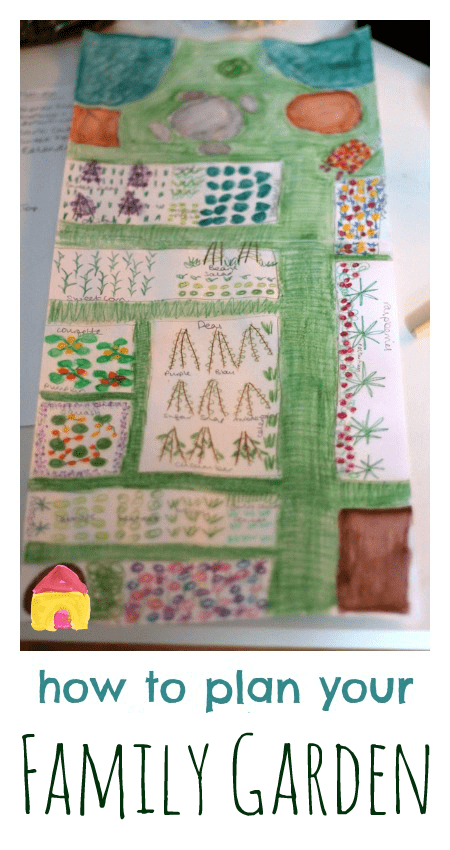Here are my tips on how to plan your garden classroom to make an easy family garden, outdoor classroom, and mini veggie garden all in one.
How to plan your garden classroom
I’m a planner by nature, and I find that taking time at the beginning of the gardening year to think about how we want to use our garden space pays dividends right throughout the seasons. A little thought now saves time, money and energy later in the year – plus it gets us all excited about the wonderful things to come!
Planning a garden for growing, playing and learning
Think about the space you already have and how you use it now. Use these questions to audit your outdoor space to see what you want to keep and what you want to change.
Follow these tips for small family gardens to maximise the space you have available, especially thinking about how to combine space for growing, playing, relaxing and learning. And always include a wild card in your plans!
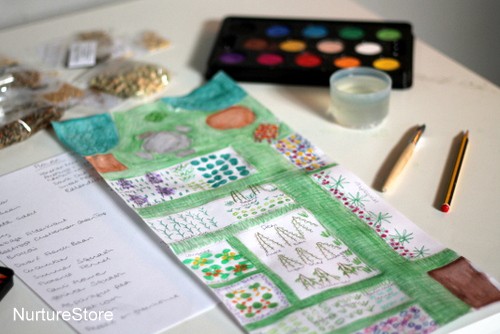
Then make a plan. We like to draw out a map of our garden. We have a tiny city garden but are also lucky to have a plot in a local allotment, which we use for growing fruit, vegetables and flowers. We also use this allotment as our garden classroom, and spend time each week growing, playing and learning. It’s important for us to plan how to use the space we so can combine all the activities in one plot, make the right choices about what we want to grow this year – to be bountiful, and ecconomical, and to always give us a new growing experience to learn from.
Making a plan with your children also lets you weave maps, measuring, maths and art into your garden project. You might like to:
– measure out your garden space with tape measures or strides
– transfer these measurements roughly, or precisely, to scale on to a large piece of paper. Mark out permanent features like a compost bin, table and chairs, and sandpit or water table. And work out where your plant-growing beds will be.
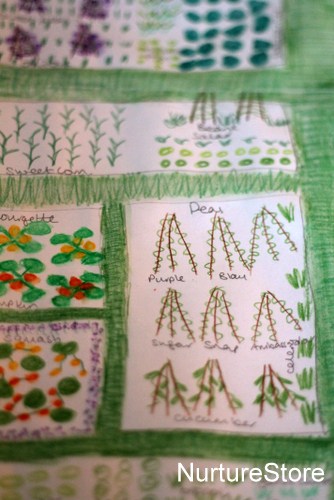
– take a look at the list of things you want to grow this year and at the growing details on your seed packets. Talk with your children about what will grow best where:
:: What needs sunshine, and what needs shade?
:: What will need a wigwam for support or be very tall, shading out other plants?
:: Talk about plants grow well together – like marigolds and tomatoes, chives and carrots – so you can use companion planting deter pests, meaning you won’t need to rely on additional chemicals.
:: And talk about what you grew in a particualr spot last year, and how rotating plants around your garden can reduce problems from pests and diseases.
– write the name of each plant you’d like to grow on a sticky note or small piece of paper, and place them on your plan. Move them around until you’ve found a home for everything.
– once you’ve decided what’s going where, you can draw them onto your garden plan. You can use pens, pencils or paints to create your unique garden art. We used watercolour pencils, and added in plant names with a pencil.
– the garden plan makes a beautiful piece of art to add to a nature table, and also acts as a blueprint for all your growing this year, so you can remember what to plant where!
What to Plant?
Don’t stress too much about what to plant – just plant something! Plant what you like to eat, what you want to see in your garden. Let each child pick a packet of seeds that catches their eye.
Don’t worry if your garden is very small – you can grow wonderful things in pots or in one raised bed. And don’t feel overwhelmed if your garden is huge – just make a start. A garden is a natural thing and develops through the seasons and over the years.
In my book, The Garden Classroom, I talk about my five favourite plants to grow with children, They are: potatoes, tomatoes, sunflowers, nasturtiums, and lettuce.
And here’s why: “These plants offer a range of growing experiences: underground, aboveground, vegetables, fruit, and flowers. They’re easy to grow and will give you a good chance of raising something your children can pick and eat, all in their first year of gardening. They’ll also be able to follow through a full cycle of planting, nurturing, harvesting, and collecting seeds for next year…If you only grew these five, you’d still have a beautiful, productive garden plot to enjoy through the seasons.”
So perhaps pick from these five, or pick favourites of your own.
Whatever you choose, let’s plant some seeds and follow through our Seeds and Shoots week, investigating, drawing and writing about our planting.
Gather pots, compost, and seeds, and start your garden today.
Save a few seeds for our seed growing experiment.
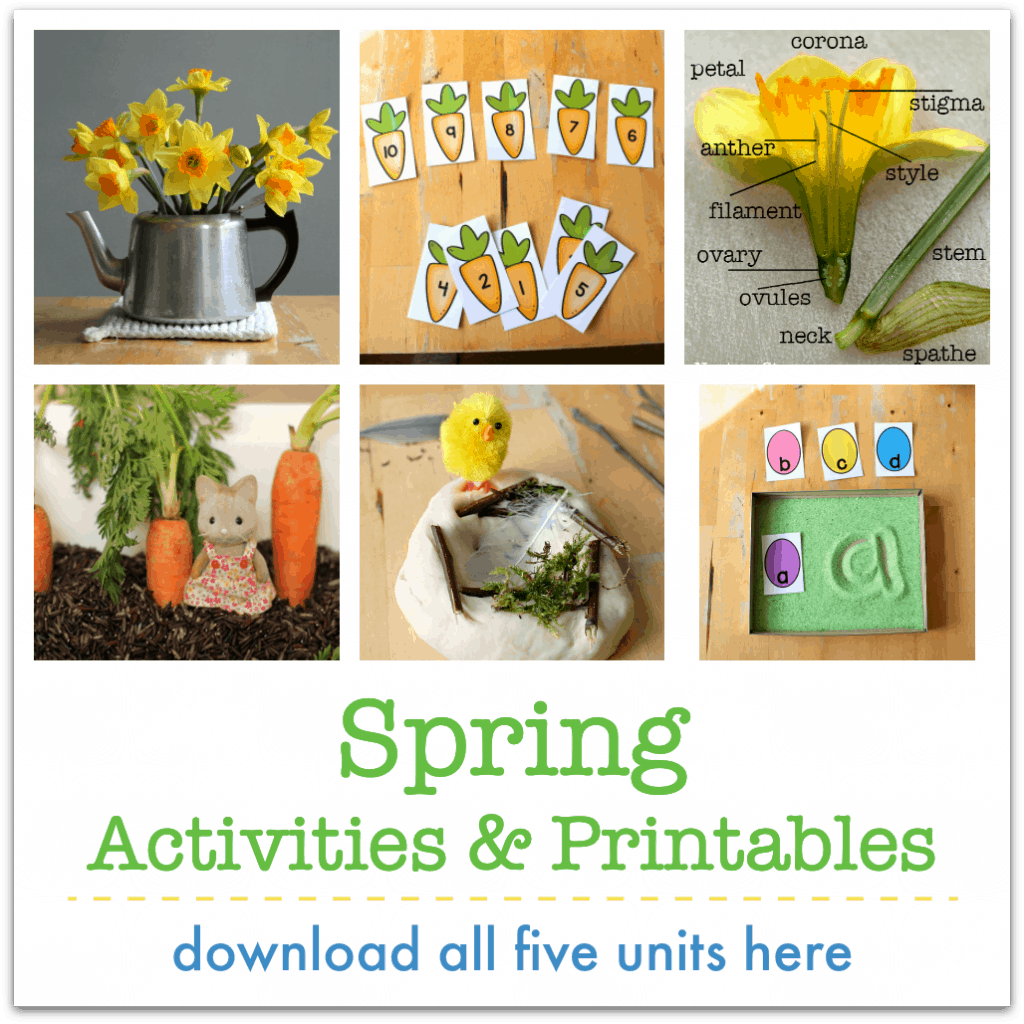
Download all the Spring units and printables
Download our complete Spring lesson plans, activities and printables and your spring teaching will be so easy!
:: five complete units of ebooks and printables for Nature Study, Welcome Spring, Daffodils, Seeds and Shoots, and Eggs and Birds
:: over 50 engaging activities and lesson plans that your children will love
:: over 30 pages of printables that make teaching so easy
:: a balanced programme of math, science, literacy, arts and crafts, nature study, sensory and imaginative play
:: a practical resource that you can start using today, in class or at home
:: weeks worth of learning all planned for you, to take you right through the season
:: created with children aged 4 to 8 in mind
You're going to love this super useful resource!
CLICK HERE to see more and get your spring resource kit.
